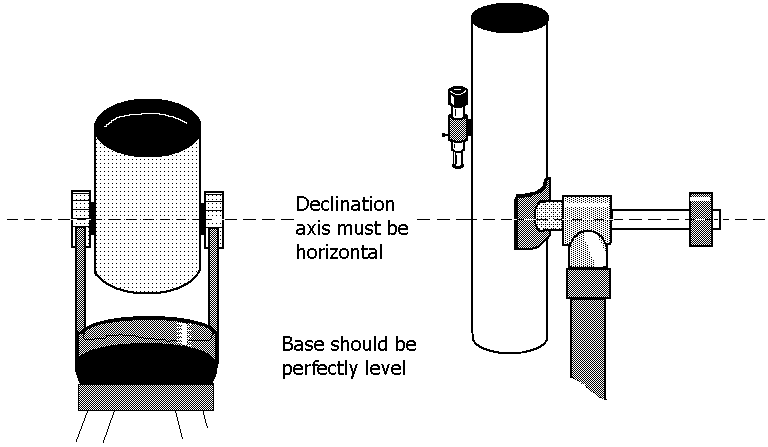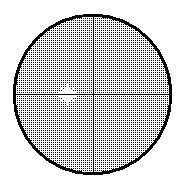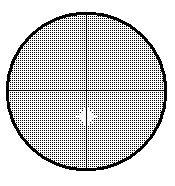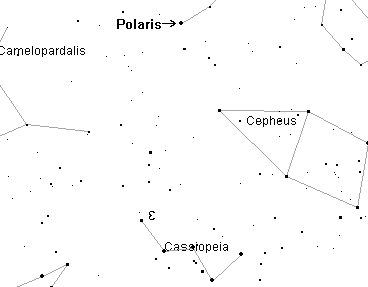(Fairly) Painless Polar Aligning
Jack Kramer
A Long-standing bit of humor at observing sessions is to ask users of Dobsonian-mounted scopes whether they're polar-aligned. Of course, they're "zenith-aligned"! In many cases, users of German equatorials or fork mounts don't do much more aligning than do their Dobsonian-using brethren -- they find it perfectly acceptable for their purposes to simply plunk the base down in a generally north-oriented direction. But for more precise tracking, accurate polar alignment is essential. Of course, if you intend to use setting circles, you must be polar-aligned. The methods shown here will generally do the trick. Longer-exposure astrophotography also will require correcting any image drift before opening the shutter if you want to minimize the amount of tracking correction required during the exposure.
In the following photo, Greg Lutes is shown setting up one of his telescopes in New Mexico for a night of astrophotography. For users of fork-mounted scopes, the simple rule of thumb is that the arms of the fork must point to true north...or at least toward the North Star.

Alignment to Polaris - As you're aware, Polaris -- the "North Star" -- isn't exactly at the celestial pole, but in many cases, alignment with Polaris is good enough. We can use the finderscope to get a bead on Polaris. Set the telescope base so the declination axis is as precisely horizontal as possible. Bear in mind that the ground may not be level, so you should first expend some effort to level the base of your mounting. A bubble level helps. (An image I always recall is Greg Lutes pounding the ground with a hammer -- beating it into submission -- to level and compact it for the feet of his tripod.)

1. After initially setting the base so the polar axle points due north, move the telescope tube to locate Polaris in the field of your finderscope. 2. With Polaris in the finder field, move the tube in declination only until Polaris lies on the horizontal crosshair.
(You may first have to rotate the finder tube to properly orient the crosshairs.)

3. Now rotate the base of your mounting or tripod just a bit until Polaris moves to the center of the crosshairs in the finder.
4. Rotate the tube 90o around the polar axis until the declination axis is in a vertical line. Polaris probably will have moved to some other point in the finder field.

5. Rotate the tube around the declination axis until Polaris moves to the vertical crosshair.
�

6. Using the mounting's altitude pivot, move the polar axis housing until Polaris is at the center of the finder crosshairs. If there is no altitude pivot, you can shim the base of the mounting or adjust the tripod leg(s) up or down, but do not change the position of the base in any other direction.
Alignment with the Declination Circle - If your telescope mounting has a declination circle with sufficiently fine divisions, this method can yield a more exact alignment. This somewhat takes into account the displacement of Polaris from the true north celestial pole. Place the telescope base so the polar axle points roughly toward Polaris. You can use the previous method for this preliminary alignment, or simply sight along the tube.
1. Aim the telescope tube at e (Epsilon) Cassiopeia and lock the polar axis. (The right ascension of Polaris is the same as that of e Cassiopeia.)
2. Using the declination setting circle, set the telescope to +89o10'. Keep the telescope to the Cassiopeia side of the pole -- there is a position on each side of the pole that has a declination of 89o10'. Lock the declination axis.

3. By moving only the mounting base, put Polaris in the center of the finderscope crosshairs. If your preliminary rough positioning toward Polaris was fairly accurate, you should now have a good alignment.
Polar Axle Finder - If you happen to have a mounting equipped with a finder integrated into the polar axle, by all means use that. These finders have a reticle showing the Polaris offset from the pole. However, you must also adjust the reticle position for the date and time. For general observing and short-duration photographic exposures, I've found that simply positioning Polaris in the center of the polar axle finder will usually be sufficient...unless you're a perfectionist!
Published in the March 1999 issue of the NightTimes




